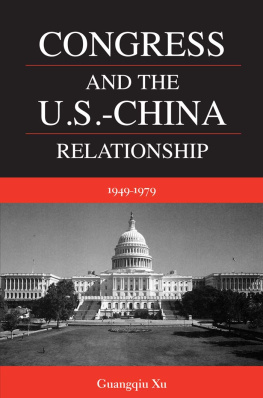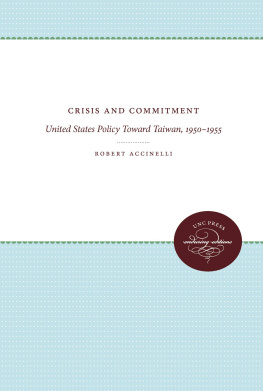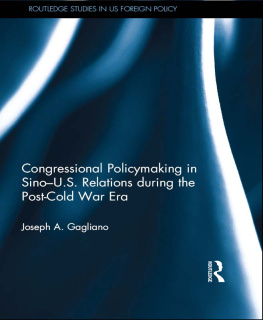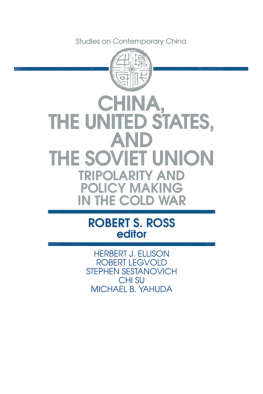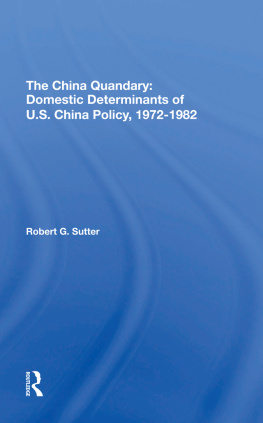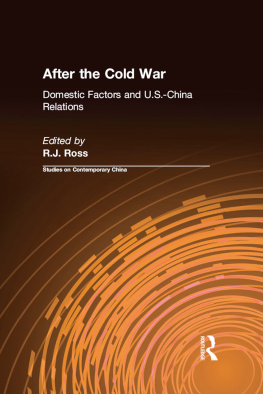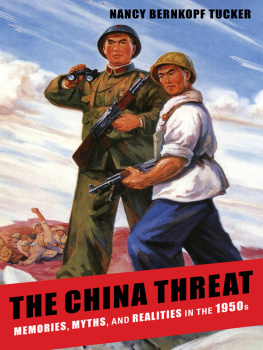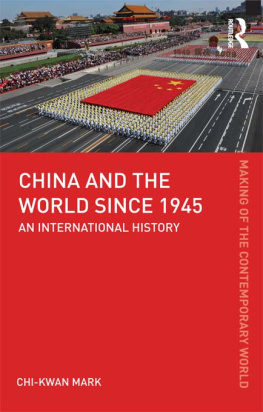C ONGRESS AND THE U.S.-C HINA R ELATIONSHIP ,
19491979
S ERIES ON I NTERNATIONAL , P OLITICAL, AND E CONOMIC H ISTORY
Jack Gieck, Lichfield: The U.S. Army on Trial
John M. Knapp, Behind the Diplomatic Curtain: Adolphe de Bourqueney and French Foreign Policy, 18161869
Martha McLaren, British India and British Scotland, 17801830: Career Building, Empire Building, and a Scottish School of Thought on Indian Governance
Charles John Fedorak, Henry Addington, Prime Minister, 18011804: Peace, War, and Parliamentary Politics
Chip Bok, Bok!: The 9.11 Crisis in Political Cartoons
Peter K. Gifford and Robert D. Ilisevich, editors, European Capital, British Iron, and an American Dream: The Story of the Atlantic & Great Western Railroad
David R. C. Hudson, The Ireland That we Made: Arthur & Gerald Balfours Contribution to the Origins of Modern Ireland
Peter John Brobst, The Future of the Great Game: Sir Olaf Caroe, Indias Independence, and the Defense of Asia
Deborah A. Symonds, Notorious Murders, Black Lanterns, & Moveable Goods: Transformation of Edinburghs Underworld in the Early Nineteenth Century
Guangqiu Xu, Congress and the U.S.-China Relationship, 19491979
C ONGRESS AND THE
U.S.-C HINA R ELATIONSHIP ,
19491979
Guangqiu Xu
UNIVERSITY OF AKRON PRESS
Copyright 2007 Guangqiu Xu
All rights reserved
All inquiries and permissions requests should be addressed to the publisher, The University of Akron Press, Akron, OH 443251703
Manufactured in the United States of America
First edition 2007
11 10 09 08 07 5 4 3 2 1
Library of Congress Cataloging-in-Publication Data
Xu, Guangqiu, 1951-
Congress and the U.S.-China relationship, 19491979 / Guangqiu Xu. 1st ed.
p. cm.
Includes bibliographical references and index.
ISBN-13: 978-1-931968-36-2 (cloth : alk. paper)
ISBN-10: 1-931968-39-X (cloth : alk. paper)
1. United States. CongressHistory20th century. 2. Executive-legislative relationsUnited StatesHistory20th century. 3. United StatesForeign relationsChina. 4. ChinaForeign relationsUnited States. 5. ChinaHistory19491976. I. Title.
JK1021.X85 2007
327.7305109'045dc22
2006036924
Manufactured in the United States of America
The paper used in this publication meets the minimum requirements of American National Standard for Information SciencesPermanence of Paper for Printed Library Materials, ANSI Z 39.481984.
CONTENTS
U.S. Defense Perimeter in the Western Pacific
ACKNOWLEDGMENTS
T his book was written during the past five years, although parts of it go back much earlier; my own thoughts on these topics have developed significantly over time. I have incurred a number of debts in completing this book. Zhang Shuguang, master historian of the U.S.-China relationship during the cold war era, helped me in exploring the byways of this subject and in locating material sources in China. I am indebted to him for his ideas and suggestions. I am also grateful to Marvin Hinten, Rick Gibson, Gretchen Eick, and Chen Jian, who read and commented on part of the manuscript.
I am particularly grateful to Friends University. The faculty research grants of Friends University enabled me to conduct field studies in China. Without such financial support, this project would have been impossible. The reference staff of the Edmund Stanley Library of Friends University helped me obtain materials through interlibrary loan.
I benefited enormously from the extensive comments by two readers of the manuscript from the University of Akron Press. They criticized style and substance, guided me on points of detail, and helped me reshape my conceptual framework throughout the entire review process.
I am also grateful to the staff at the University of Akron Press for their important help in improving this manuscript. Their professionalism and commitment to academic excellence helped make this publication a success during the editorial process. In particular, I am very grateful to Elton Glaser, interim director, and Amy Freels, production coordinator. They did excellent jobs and made this book much better.
Finally, I would like to thank my wife, Nanping Wang, and our two sons, Jimmy Xu and Jack Xu, for their support of my project. Unsurprisingly, the opinions in this book are entirely mine and should not be ascribed to the individuals and institutions acknowledged above.
Peoples Republic of China
NOTE ON TRANSLITERATION
T his book uses pinyin romanization, a system that is applied to Chinese names of persons, places, and terms. However, some popular names have traditional Wade-Giles spellings appearing in parentheses, and traditional spellings are used for place names and personal names that are long familiar in the West or difficult to recognize in pinyin. Thus, Tachen Island is retained in preference to Dachen Island, and Chiang Kai-shek is used rather than Jiang Jieshi. Names in Taiwan and Hong Kong are not within the pinyin system.
As a convention in this book, total transliteration is employed for Chinese personal names, in which surnames are in front of given names, exactly as they are in Chinese. For example, in the name of Deng Xiaoping, Deng is the surname, and Xiaoping is the given name.
ABBREVIATIONS
CCP | Chinese Communist Party |
GMD | Guomindang (Nationalist Party) |
MFN | Most-Favored-Nation |
PLA | Peoples Liberation Army |
PRC | Peoples Republic of China |
U.N. | United Nations |
U.S. | United States |
C ONGRESS AND THE U.S.-C HINA R ELATIONSHIP ,
19491979
INTRODUCTION
T he Truman administration was working on a new China policy when the Chinese Communist Party (CCP) took over mainland China in 1949. The policy was not shaped completely until North Korea attacked South Korea in 1950, when President Harry S. Truman adopted a policy of diplomatic isolation and military containment of the Peoples Republic of China (PRC). The containment-and-isolation policy continued through the Eisenhower, Kennedy, and Johnson administrations and helped the Nationalists survive the Taiwan Strait crises of 1954 and 1958 when units of the Peoples Liberation Army (PLA), with varying degrees of enthusiasm, sought to take over Taiwans outlying islands. In the late 1960s, the U.S. government made an effort to begin a dialogue with the PRC with the intention of resolving the Vietnam issue and putting pressure on another enemythe Soviet Union. President Nixons visit to Beijing in early 1972 marked a new start in Sino-American relations, ending two decades of separation between the most prosperous and most populous nations in the world. Several years later, President Jimmy Carter declared diplomatic recognition of the Beijing government and established official relations with the PRC on January 1, 1979.

